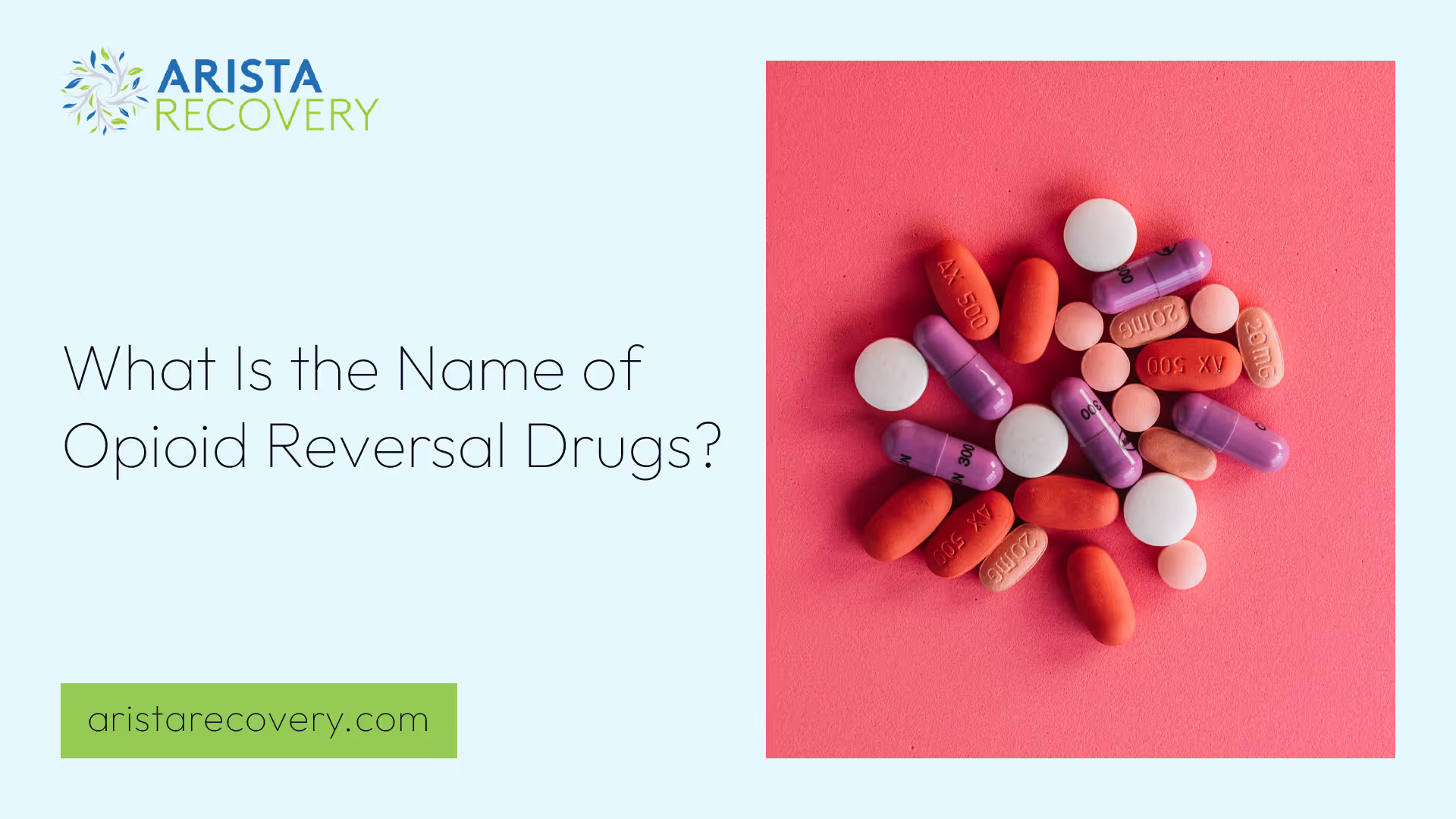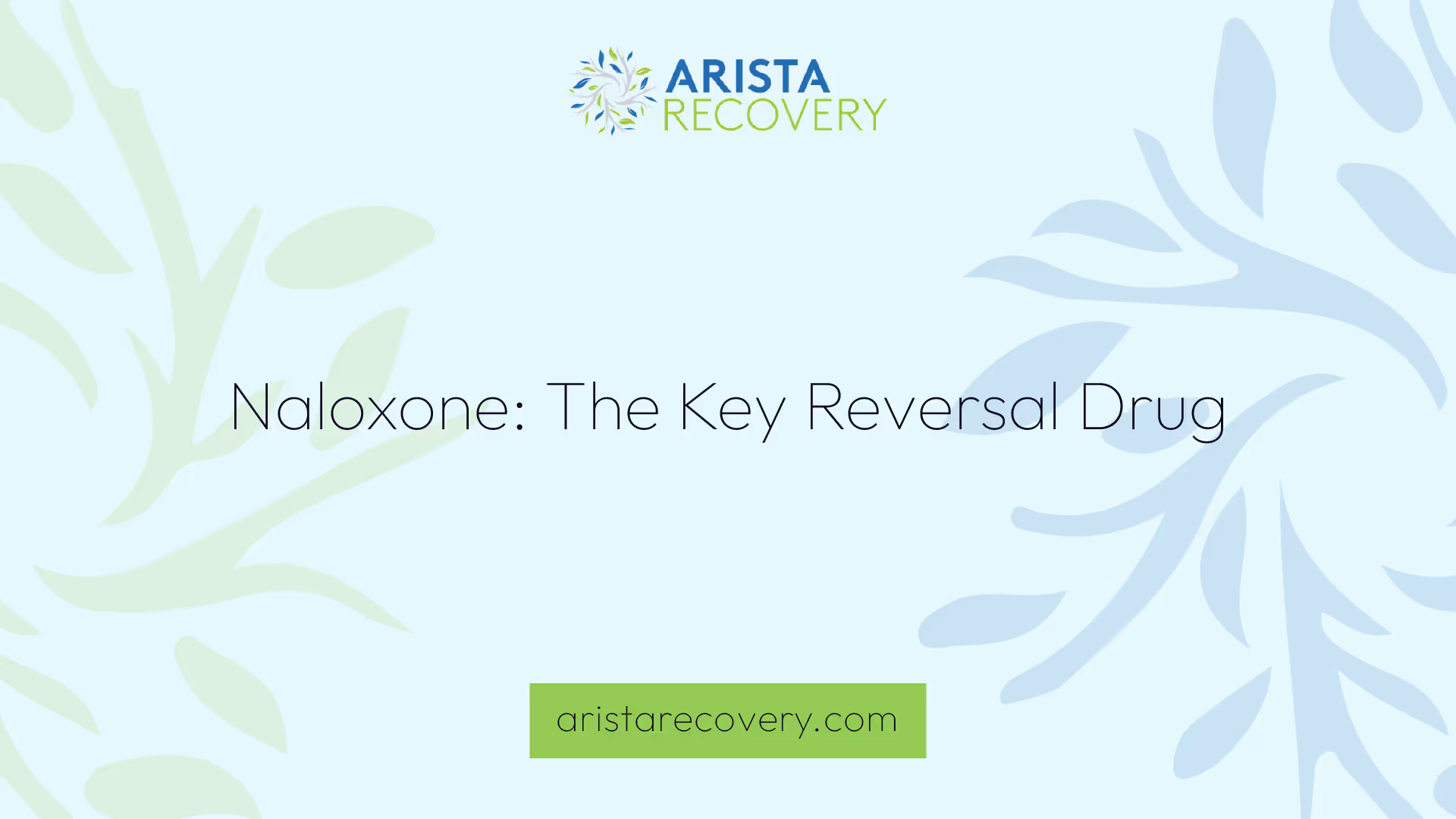What Is the Name of Opioid Reversal Drugs?


Understanding Opioid Reversal Drugs
Opioid reversal drugs play a vital role in treating opioid overdoses. They work by binding to opioid receptors in the central nervous system, causing the rapid removal of any opioid drug attached to these receptors, thus reversing the drug's effects. This section delves into the mechanism of action of these drugs and the FDA-approved medications available for reversing opioid overdoses.
Mechanism of Action
Opioid reversal agents, also known as opioid antagonists, function by targeting opioid receptors in the brain and nervous system. These receptors are responsible for mediating the effects of opioid drugs such as heroin, morphine, and oxycodone. When an opioid antagonist binds to these receptors, it blocks the opioids from exerting their effects, thereby reversing symptoms like respiratory depression and sedation.
- Binding to Opioid Receptors: Opioid reversal agents attach to the same receptors that opioids bind to, effectively displacing the opioid molecules.
- Blocking Effects: By occupying these receptor sites, reversal agents prevent the opioids from activating the receptors.
- Rapid Onset: These drugs typically act quickly, with effects observable within minutes when administered properly.
FDA-Approved Reversal Medications
The FDA has approved two primary medications for opioid overdose reversal: naloxone and nalmefene. These medications are critical tools in combating the opioid crisis, particularly in emergency settings.
Figures courtesy SAMHSA
Naloxone
Naloxone is an opioid antagonist that binds to opioid receptors and can quickly reverse the effects of opioids like heroin, morphine, and oxycodone [2]. It is available in several forms, including intranasal spray and injectable solutions. Naloxone acts within 1-2 minutes when administered intravenously and has a half-life of about one hour.
For more information on naloxone and its functionality, visit our section on what drug is an opioid antidote?.
Nalmefene
Nalmefene is another FDA-approved opioid overdose reversal medication. It is an opioid receptor antagonist with a longer half-life than naloxone, meaning it stays in the body longer. Nalmefene is available by prescription only and is used to treat acute opioid overdose. However, it can cause more severe and prolonged withdrawal symptoms compared to naloxone.
For details on emerging opioid reversal medications, check out our article on what is the new opioid reversal medication?.
Understanding these opioid reversal drugs and their mechanisms is crucial for effectively managing opioid overdoses. Proper training and awareness can save lives, making it essential for individuals and families seeking addiction treatment to be well-informed about these life-saving medications.

Naloxone: The Key Reversal Drug
Naloxone is a critical medication in the fight against opioid overdoses. This section will delve into how naloxone works and the various forms and methods of administration.
Naloxone Functionality
Naloxone is a medication that rapidly reverses an opioid overdose. It attaches to opioid receptors and reverses and blocks the effects of other opioids. This action quickly restores normal breathing to a person if their breathing has slowed or stopped due to an opioid overdose [4]. The drug is highly effective because it acts on all types of opioid receptors, especially with a high affinity for µ receptors. Naloxone has a half-life of about one hour and acts within 1-2 minutes when administered intravenously.
Forms and Administration
Naloxone is available in two FDA-approved forms: injectable and prepackaged nasal spray. Each form has its own advantages and specific use cases. It is vital for individuals to receive proper training on how and when to use naloxone, read the product instructions, and check the expiration date [4].
Injectable Naloxone
Injectable naloxone is typically used by healthcare professionals. This form can be administered directly into a vein (intravenously) or muscle (intramuscularly). The intravenous route is the fastest, acting within 1-2 minutes. The intramuscular route also offers rapid action but may take a few minutes longer.
Prepackaged Nasal Spray
The prepackaged nasal spray form of naloxone is designed for ease of use, making it accessible for non-medical individuals. This form does not require assembly and can be administered quickly in emergency situations. It is a preferred option for police officers, emergency medical technicians, and non-emergency first responders.
In most states, individuals at risk of opioid overdose or those who know someone at risk can be trained on how to administer naloxone. The U.S. Centers for Disease Control and Prevention (CDC) recommends co-prescription of naloxone for some patients who take opioids to reduce the risk of opioid-related emergency room visits and prescription opioid-involved overdose deaths [4].
To learn more about opioid overdose reversal medications, visit our page on opioid overdose reversal medications or explore what drug is an opioid antidote? for additional information.

Nalmefene: Another Reversal Option
Role of Nalmefene
Nalmefene is an effective opioid receptor antagonist, similar to naloxone, but with a longer half-life, which means it stays in the body longer. This feature makes nalmefene a valuable option for reversing opioid overdoses, especially in cases where extended monitoring and care are required.
Nalmefene works by binding to opioid receptors in the brain, displacing opioids such as heroin, morphine, and oxycodone. This action helps to reverse the life-threatening effects of an overdose, including respiratory depression and sedation. One of the key advantages of nalmefene over naloxone is its ability to provide sustained opioid receptor blockade, which can help prevent re-narcotization (the return of overdose symptoms).
Prescription and Usage
Nalmefene is available by prescription only and is approved for use in individuals aged 12 years and older. It is typically administered as a nasal spray and is designed for use in emergency situations to treat acute opioid overdose. Due to its longer duration of action, nalmefene is particularly useful in settings where prolonged opioid receptor antagonism is necessary.
Patients and caregivers should be trained on the proper administration of nalmefene and should be aware of its potential side effects, including severe and longer-lasting withdrawal symptoms. Pregnant women can be safely given nalmefene under the supervision of a doctor, but it is important to monitor both the patient and the unborn baby for signs of opioid withdrawal [3].
Proper storage of nalmefene is crucial to ensure its effectiveness. The medication should be stored at room temperature, away from direct sunlight, and should be replaced upon expiration. For more information on the safe storage and handling of reversal medications, visit our article on opioid overdose reversal medications.
Understanding the role of nalmefene and how to use it effectively can make a significant difference in emergency situations involving opioid overdose. For more details on other reversal agents and emerging strategies, explore our sections on what drug is an opioid antidote? and what is the new opioid reversal medication?.
Practical Considerations for Reversal Drugs
When dealing with opioid reversal medications, there are several practical considerations to keep in mind. These include the importance of training and the proper storage and expiration of the medications.
Importance of Training
Training is crucial for individuals who may need to administer opioid reversal drugs like naloxone. According to the National Institute on Drug Abuse, naloxone comes in two FDA-approved forms: injectable and prepackaged nasal spray. Regardless of the dosage form, it is essential to receive proper training on how and when to use naloxone.
Training should include reading the product instructions thoroughly and understanding the signs of an opioid overdose. This knowledge can make a significant difference in emergency situations where quick and effective action is required.
Key Aspects of Training:
- Recognizing the signs of an opioid overdose
- Learning to administer the medication correctly
- Understanding the importance of seeking medical help immediately after administration
- Knowing how to check and interpret the expiration date
For more detailed information, you can explore our article on opioid overdose reversal medications.
Storage and Expiration
Proper storage and awareness of expiration dates are critical to ensure the effectiveness of opioid reversal medications. According to SAMHSA, medications like naloxone and nalmefene should be stored at room temperature, away from direct sunlight and extreme temperatures.
Here are some practical tips for storage and expiration:
It's important to keep these medications available at all times, especially for individuals who are at high risk of an opioid overdose. Always make sure to replace the medication when the expiration date passes or if the medication has been exposed to extreme temperatures.
For more information on the latest in opioid reversal medications, visit our article on what is the new opioid reversal medication.
Proper training and storage practices ensure that opioid reversal drugs are effective when needed most. By understanding these practical considerations, individuals and families can be better prepared to handle opioid-related emergencies. For further guidance, explore our articles on what drug is an opioid antidote and what is the reversal of opiate activity.
Safety and Side Effects
When considering the use of opioid reversal drugs for overdose situations, understanding their safety and potential side effects is crucial. This knowledge ensures that individuals and families can make informed decisions and act effectively in emergencies.
Serious Considerations
Opioid reversal drugs, such as naloxone and nalmefene, are generally safe but can have serious side effects that necessitate immediate medical attention. Some of the most critical considerations include:
- Allergic Reactions: Although rare, some individuals may experience allergic reactions to these medications. Symptoms can include rash, itching, swelling, severe dizziness, and trouble breathing. Immediate medical help should be sought if any of these symptoms occur.
- Opioid Withdrawal: Both naloxone and nalmefene can induce opioid withdrawal symptoms, which can be uncomfortable and sometimes severe. Symptoms may include nausea, vomiting, sweating, shaking, rapid heartbeat, and agitation.
- Pregnancy Considerations: Pregnant women can be safely given both naloxone and nalmefene in limited doses under the supervision of a doctor. However, nalmefene can cause opioid withdrawal in an unborn baby, necessitating monitoring of the patient and baby by practitioners [3].
Seeking Medical Help
Administering opioid reversal drugs is often the first step in managing an opioid overdose, but it is crucial to follow up with professional medical assistance. Key actions include:
- Immediate Action: After administering naloxone or nalmefene, call emergency services immediately. While these drugs can temporarily reverse the effects of an opioid overdose, they are not a substitute for medical treatment.
- Continuous Monitoring: The effects of naloxone typically last for about 1 hour, while nalmefene has a longer half-life [2]. Continuous monitoring is necessary to ensure that the individual does not relapse into an overdose state once the medication wears off.
- Follow-Up Care: Post-administration care is essential. Medical professionals will monitor the individual for any adverse reactions and provide additional treatment as needed. This may include further doses of the reversal drug or other medical interventions.
Understanding the safety and side effects of these medications can significantly improve outcomes in opioid overdose situations. For more information on opioid overdose reversal medications and what drug is an opioid antidote?, explore our related articles.
Beyond Opioid Reversal
While opioid reversal medications such as Naloxone and Nalmefene are crucial in addressing opioid overdoses, there are also reversal agents for other types of medications. Additionally, new strategies are emerging to improve the efficacy and safety of reversal treatments.
Reversal Agents for Other Medications
Reversal agents are not limited to opioids. Various drugs have their own specific antidotes designed to counteract overdoses or adverse reactions.
Emerging Reversal Strategies
New strategies and innovations continue to evolve in the field of medical reversal treatments.
- Advanced Monitoring Technologies: New devices and technologies are being developed to monitor patients more effectively during and after the administration of reversal agents. These technologies aim to provide real-time data on patient vitals and drug efficacy.
- Combination Therapies: Research is exploring the use of combination therapies to enhance the effectiveness of reversal agents. For instance, combining Naloxone with other supportive treatments to improve outcomes in opioid overdose cases.
- Long-acting Reversal Agents: Developing long-acting versions of reversal drugs to provide prolonged protection against drug overdoses. These agents could be particularly beneficial in preventing recurrent overdoses in high-risk individuals.
- Genetic Testing: Utilizing genetic testing to tailor reversal treatments based on individual patient profiles. This personalized approach aims to maximize the efficacy and minimize the side effects of reversal agents.
- Education and Training: Emphasizing the importance of training for both healthcare providers and the general public in the administration of reversal agents. Proper training can significantly improve the outcomes of emergency interventions.
For more detailed information on opioid reversal agents, visit our sections on opioid overdose reversal medications and what is the reversal of opiate activity?.
References
[1]: https://www.rxlist.com/howdoopioidreversalagents_work/drug-class.htm
[2]: https://www.ncbi.nlm.nih.gov/pmc/articles/PMC4645356/
[3]: https://www.samhsa.gov/medications-substance-use-disorders/medications-counseling-related-conditions/opioid-overdose-reversal-medications
You’re not alone in this.
When mental health challenges and addiction intersect, it can feel isolating. At Arista, we offer compassionate, evidence-based, and trauma-informed care to help you heal, grow, and move forward.
You’re not alone in this.
When mental health challenges and addiction intersect, it can feel isolating. At Arista, we offer compassionate, evidence-based, and trauma-informed care to help you heal, grow, and move forward.
Support that moves with you.
You’ve taken a brave first step. At Arista Recovery, we’re here to help you continue with best-in-class care designed for long-term healing and support.
.webp)






